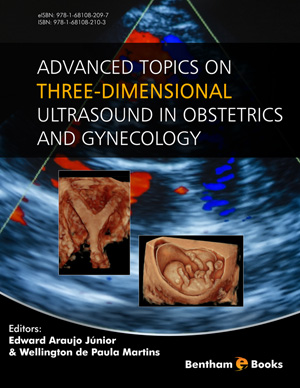Abstract
It is important to know how three-dimensional ultrasound (3DUS) works and its functions for making the best use of 3DUS. 3DUS shows various kinds of images through following processes: 1. Acquisition of 3D data (3D scanning) - A large number of consecutive tomographic (2D) images are obtained through 3D scanning with a 3D probe; 2. Construction of a 3D data set - A 3D data set is constructed from the acquired 2D images. A gated technique called STIC (spatiotemporal image correlation) is used for construction of 3D data sets of the fetal heart; 3. Volume visualization - A computer constructs 2D and 3D images from the 3D data set. 3DUS shows multiplanar images, such as a multi-parallel-plane image and a three-orthogonal-plane image. Each plane can be selected arbitrarily by translation and rotation of the 3D data set. Most of 3D images are constructed by volume rendering. Proper settings of ROI (region of interest) and threshold are important for obtaining a clear surface rendered image. Electrical scalpel (or “MagiCut”) is used to eliminate unfavorable structures around the object. Various kinds of 3D images as well as a surface rendered image can be obtained by volume rendering. Surface rendering is also used for 3D image construction. Boundaries of the object should be outlined strictly and it takes a lot of time to get a 3D image in surface rendering. But once the object is extracted, the volume of the object can be calculated.
Keywords: 3D data set, 3D probe, 3D scanning, 4D ultrasound, bi-plane image, STIC (spatiotemporal image correlation), electrical scalpel, intermediate geometrical data set, inversion mode, light source, MagiCut, maximum mode, minimum mode, multi-parallel-plane image, multiplanar image, regional extraction, ROI (region of interest), silhouette mode, surface rendered image, surface rendering, three-orthogonal-plane image, threshold, volume measurement, volume rendering, voxel, X-ray mode.






















